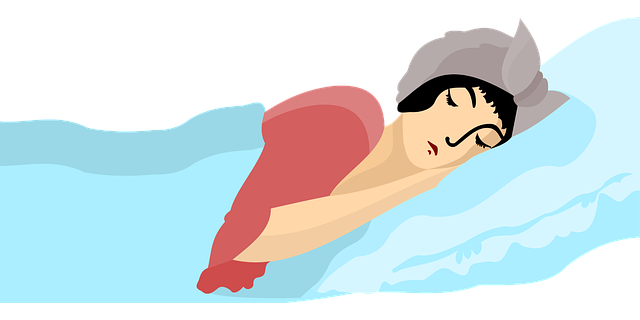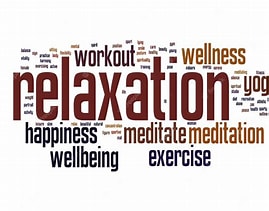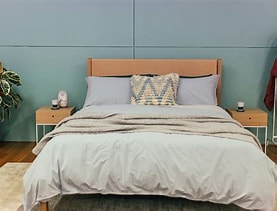
Simple Techniques That Really Work for Older Adults
Introduction to Fall Asleep Faster

Fall Asleep Faster. It’s a quiet frustration many older adults face—lying in bed for hours, eyes wide open, watching the clock tick into the early hours. You feel tired, but sleep just doesn’t come. Over time, poor sleep affects memory, mood, strength, and overall health.
But here’s the good news: while aging does naturally change our sleep patterns, falling asleep faster is absolutely possible—with the right strategies, routines, and a bit of consistency.
This blog explores proven self-help methods that help older adults drift off sooner and enjoy more restful nights.
Why Falling Asleep Gets Harder with Age

Fall Asleep Faster. As we grow older, several changes make sleep more elusive:
- Reduced melatonin production, the hormone that signals sleep
- Lighter sleep cycles, causing more nighttime waking
- Chronic pain or illness
- Anxiety or racing thoughts
- Too much daytime napping or inactivity
But we can work with our bodies—not against them—by creating an environment and routine that tells the brain: “It’s time to sleep.”
Self-Help Techniques to Fall Asleep Faster
🧘♂️ 1. The 4-7-8 Breathing Method

Fall Asleep Faster. This simple breathing pattern calms the nervous system.
How to do it:
- Inhale gently through the nose for 4 seconds
- Hold your breath for 7 seconds
- Exhale slowly through the mouth for 8 seconds
- Repeat for 4–8 cycles
It helps slow your heart rate, reduce anxiety, and trigger relaxation.
🌙 2. The Military Sleep Method

Fall Asleep Faster. Used by soldiers in high-stress conditions, this method reportedly helps many fall asleep in under 2 minutes.
How to do it:
- Relax your face (including your jaw and eyes)
- Drop your shoulders and arms to your sides
- Exhale, relax your chest, and release any tension in your legs
- Clear your mind for 10 seconds—picture a calm lake, or say “don’t think” on repeat
- Sleep should follow in under 2 minutes with practice
🌿 3. Progressive Muscle Relaxation (PMR)

Fall Asleep Faster. This technique involves slowly tensing and then relaxing each muscle group from head to toe.
How to do it:
- Start at your feet—squeeze for 5 seconds, then relax
- Move up: calves, thighs, stomach, chest, arms, neck, and face
- Focus on the contrast between tension and relaxation
It trains your body to recognize calmness and let go of stress.
📖 4. Bedtime Routine That Signals Sleep

Fall Asleep Faster. Establish a calming pre-sleep routine:
- Dim the lights an hour before bed
- Avoid screens (TV, phone, tablet)
- Try a warm shower or bath
- Read a gentle book
- Listen to soft music or white noise
Doing this nightly tells your brain it’s time to wind down.
☕ 5. Watch What You Eat and Drink in the Evening
Fall Asleep Faster. Avoid caffeine, alcohol, and big meals close to bedtime. Instead, try:
- Warm milk or herbal tea (like chamomile or valerian root)
- A light snack with tryptophan, such as banana and peanut butter, oats, or almonds
These help increase melatonin and serotonin naturally.
🛏️ 6. Make Your Bedroom a Sleep Sanctuary
Fall Asleep Faster. Create a space that encourages rest:
- Cool (16–19°C), dark, and quiet
- Blackout curtains or an eye mask
- No clocks in view (they increase anxiety)
- No phone or TV in the room if possible
The bedroom should be for sleep only, not entertainment or worry.
🚫 7. Avoid Lying in Bed Awake
Fall Asleep Faster. If you haven’t fallen asleep after 20–30 minutes:
- Get up
- Sit in a dimly lit room
- Do something calming (read, stretch, pray, or breathe)
Then return to bed when you feel drowsy again. This prevents your brain from associating the bed with stress.
🕒 8. Stick to a Schedule
Fall Asleep Faster. Try to go to bed and wake up at the same time every day—even on weekends. A steady rhythm helps regulate your body’s internal clock (circadian rhythm), making falling asleep easier over time.
🩺 9. Rule Out Medical Causes
Fall Asleep Faster. If trouble sleeping continues despite good habits, speak to your doctor. Poor sleep may be linked to:
- Sleep apnea
- Chronic pain
- Restless legs syndrome
- Side effects of medications
A medical review may offer solutions.
Final Thoughts
Falling asleep quickly doesn’t require sleeping pills or special gadgets. With the right breathing, bedtime rituals, and mental cues, your body can relearn the natural rhythm of sleep.
Consistency is key—pick 2 or 3 techniques, use them each night, and stick with it for a couple of weeks. Small shifts can lead to big changes in how you fall asleep—and stay asleep.
Pensioner Fitness – Helping You Stay Strong, Steady, and Self-Reliant
DONATE
DONATE
Pensioner Fitness
Pensioner Fitness Awards
THE BUSINESS CONCEPT, BEST IN BUSINESS AWARDS
- “MOST INSPIRING SENIOR WELLNESS WEBSITE 2023“
THE GLOBAL HEALTH AND PHARMA, FITNESS AND NUTRITION AWARDS
2. “BEST SENIOR FITNESS AND NUTRITION SPECIALIST 2023“
THE MIDDLE EAST AND AFRICA BUSINESS AWARDS
3. “ MOST INCLUSIVE FITNESS PROVIDER 2023″
THE CORPORATE LIVE WIRE GLOBAL AWARDS 2023/2024
4. ” FITNESS ADVISORY PLATFORM OF THE YEAR“ 2023/2024
In Conclusion
Fall Asleep Faster. Many older adults struggle to fall asleep, lying awake for hours and waking up tired. This post explores proven self-help techniques—like 4-7-8 breathing, the military sleep method, and progressive muscle relaxation—that help calm the mind and body for faster, deeper sleep. With consistency, these simple habits can transform your nights and boost your energy for the day ahead.
Important Note *
Remember that everyone is different, it is ultimately YOUR RESPONSIBILITY to find what your body responds to. So please do your due diligence before trying anything new, including getting Medical Advice to ensure your safety and peace of mind.
Connect with me and leave a comment
2 replies on “Fall Asleep Faster”
Bad link. This is supposed to be about building strength.
Hi William, my apologies, we discovered a link problem which is now fixed. All the very best Ian